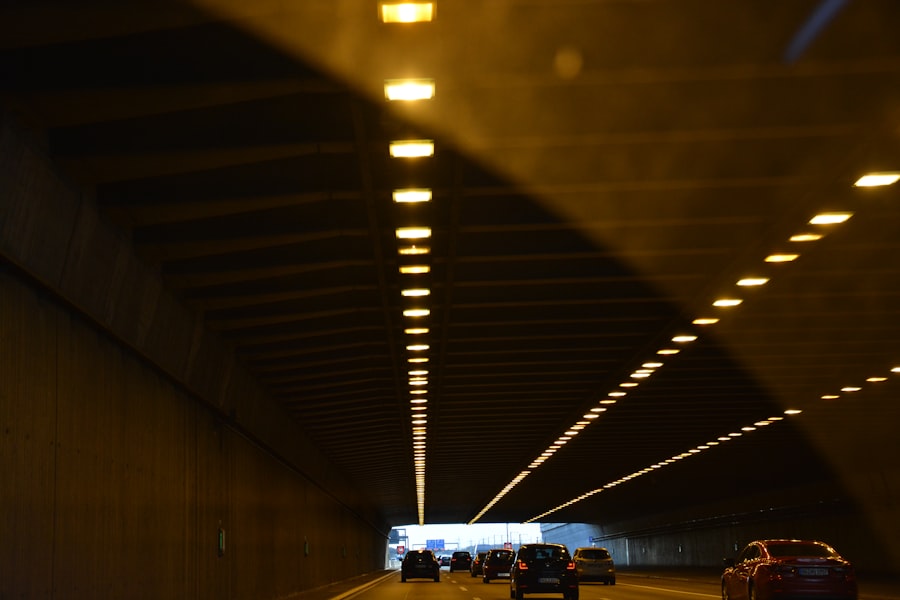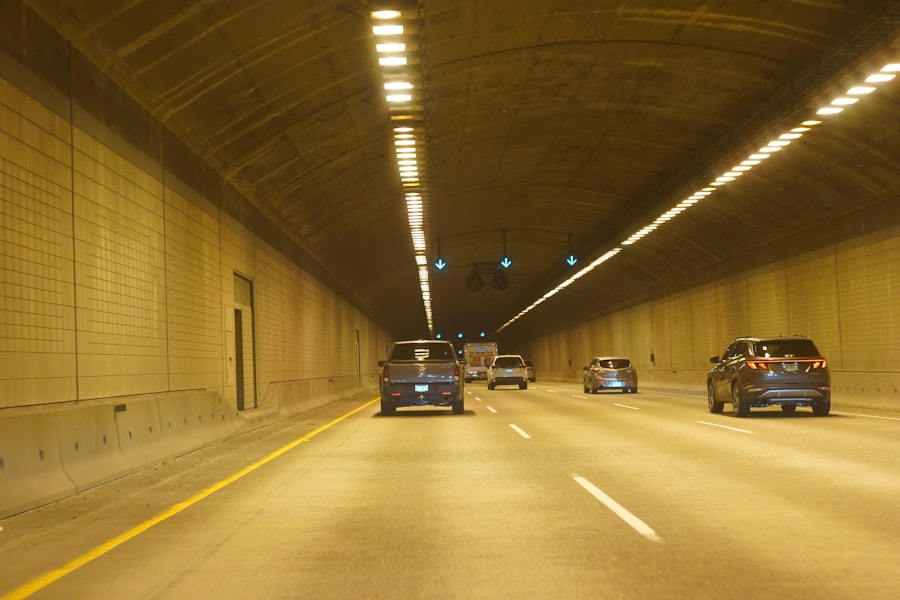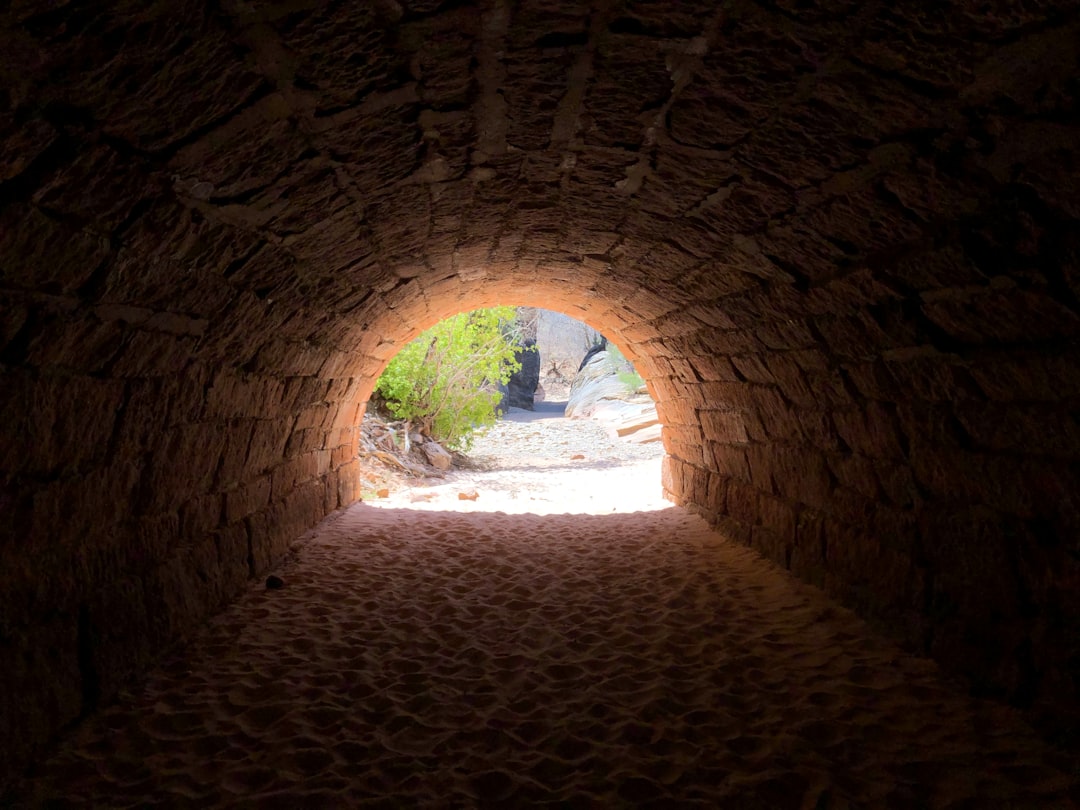The history of New York’s deep tunnels is a fascinating tale that intertwines engineering prowess with the city’s relentless growth. The origins of these subterranean passages can be traced back to the late 19th century, a time when the burgeoning metropolis faced significant challenges related to sanitation and transportation. The construction of the first major deep tunnel, the Croton Aqueduct, began in 1837 and was completed in 1842.
This monumental project was designed to bring fresh water from the Croton River to Manhattan, marking the beginning of an extensive underground network that would evolve over the decades. As the city expanded, so did the need for more sophisticated infrastructure. The early 20th century saw the introduction of the New York City Subway system, which began operations in 1904.
This ambitious project not only transformed urban mobility but also set the stage for further underground developments. The construction of additional tunnels for sewage, drainage, and utilities became imperative as the population surged. By the mid-20th century, New York had established a complex web of deep tunnels that served various essential functions, laying the groundwork for the modern city.
Key Takeaways
- The deep tunnels in New York have a rich history dating back to the early 20th century, with the first tunnels being built to address the city’s growing transportation needs.
- The engineering feats behind the tunnels are impressive, with innovative construction techniques and materials being used to overcome the challenges of building underground in a densely populated urban environment.
- The purpose and function of the tunnels are to provide essential infrastructure for transportation, utilities, and communication, serving as vital arteries for the city’s continued growth and development.
- Exploring the subterranean world of the tunnels offers a fascinating glimpse into the hidden infrastructure of New York, with unique architectural features and a complex network of passageways and chambers to be discovered.
- The challenges of maintaining and preserving the tunnels are significant, requiring ongoing investment and expertise to ensure their safety, functionality, and longevity for future generations.
The Engineering Feats Behind the Tunnels
The engineering feats behind New York’s deep tunnels are nothing short of extraordinary. The construction techniques employed in creating these subterranean passages reflect both innovation and adaptability. Engineers faced numerous challenges, including geological variations, existing infrastructure, and the sheer scale of the projects.
One notable technique used in tunnel construction is the cut-and-cover method, which involves excavating a trench, constructing the tunnel walls and roof, and then covering it back up. This method was particularly effective for shallow tunnels but posed challenges in densely populated areas. Another remarkable engineering achievement is the use of tunnel boring machines (TBMs), which revolutionized the way tunnels are constructed.
These massive machines can excavate large volumes of earth while simultaneously installing tunnel linings, significantly reducing construction time and minimizing surface disruption. The development of TBMs allowed engineers to tackle deeper and more complex tunnels, such as those used for the Second Avenue Subway project, which faced numerous geological and logistical hurdles. The combination of traditional methods and cutting-edge technology has enabled New York to maintain its extensive network of deep tunnels.
The Purpose and Function of the Tunnels

The purpose and function of New York’s deep tunnels extend far beyond mere transportation. These subterranean passages play a crucial role in managing the city’s water supply, sewage systems, and stormwater runoff. The Croton Aqueduct, for instance, not only delivers fresh water but also serves as a vital component of the city’s overall water management strategy.
Similarly, the deep sewer tunnels are designed to transport wastewater away from densely populated areas, ensuring that public health is maintained. In addition to their role in sanitation and water management, these tunnels also facilitate essential utilities such as electricity and telecommunications. Many of New York’s power lines and communication cables are housed within these underground passages, protecting them from weather-related disruptions and ensuring a reliable supply of services to residents and businesses alike.
As such, the deep tunnels are integral to the city’s infrastructure, supporting its functionality and resilience in the face of challenges.
Exploring the Subterranean World: What to Expect
| Topic | Details |
|---|---|
| Location | Subterranean caves, tunnels, and underground rivers |
| Exploration | Guided tours, spelunking, and cave diving |
| Environment | Dark, damp, and unique geological formations |
| Wildlife | Adapted species, such as cave fish and bats |
| Challenges | Navigating tight spaces, limited visibility, and potential hazards |
Exploring New York’s subterranean world offers a unique perspective on the city’s history and engineering marvels. Visitors who venture into these deep tunnels can expect to encounter a labyrinthine network that reveals both the ingenuity and complexity of urban infrastructure. Guided tours often provide insights into the construction techniques used, as well as the historical context behind each tunnel’s creation.
Participants may find themselves standing in awe beneath massive archways or walking alongside intricate brickwork that has withstood the test of time. However, exploring these tunnels is not without its challenges. The environment can be damp and dark, requiring appropriate gear for safety and comfort.
Additionally, some areas may be restricted due to ongoing maintenance or safety concerns. Nevertheless, those who embark on this subterranean adventure are rewarded with a deeper understanding of how these hidden passages contribute to the city’s daily life. From witnessing the remnants of old infrastructure to marveling at modern engineering solutions, exploring New York’s deep tunnels is an experience that captivates both history enthusiasts and curious adventurers alike.
The Challenges of Maintaining and Preserving the Tunnels
Maintaining and preserving New York’s deep tunnels presents a formidable set of challenges for city officials and engineers alike.
Issues such as water infiltration, sediment buildup, and aging materials can compromise their effectiveness over time.
As a result, city agencies must allocate significant resources to monitor these subterranean passages and address any emerging problems promptly. Moreover, preserving these tunnels involves balancing modernization with historical preservation. As new technologies emerge and urban demands evolve, there is often pressure to upgrade existing infrastructure.
However, this must be done with care to avoid damaging historical elements that contribute to the city’s rich narrative. Striking this balance requires collaboration among engineers, historians, and city planners to ensure that New York’s deep tunnels continue to serve their purpose while honoring their historical significance.
Uncovering the Secrets and Mysteries of the Tunnels

Beneath New York’s bustling streets lies a world filled with secrets and mysteries waiting to be uncovered. Many of these deep tunnels have stories that remain untold or shrouded in legend. For instance, some urban explorers have reported encountering hidden chambers or forgotten passageways that hint at past uses or abandoned projects.
These discoveries often spark curiosity about what lies beneath the surface and how it relates to the city’s history. Additionally, there are tales of ghostly encounters and urban myths associated with certain tunnels. Some believe that remnants of old subway lines or forgotten stations hold echoes of a bygone era, while others speculate about hidden treasures or artifacts left behind by previous generations.
These stories add an element of intrigue to the already fascinating world beneath New York City, inviting both locals and tourists to ponder what secrets may still be hidden within its depths.
The Impact of the Tunnels on New York City’s Infrastructure
The impact of New York’s deep tunnels on the city’s infrastructure cannot be overstated. These subterranean passages form the backbone of essential services that keep the metropolis functioning smoothly. From transporting wastewater away from residential areas to providing fresh water for millions of residents, these tunnels are critical for public health and safety.
Moreover, they facilitate utilities such as electricity and telecommunications that are vital for modern living.
In times of crisis—be it natural disasters or other emergencies—these underground networks can serve as alternative routes for evacuation or transportation of essential supplies.
Their strategic placement throughout the city allows for flexibility in response efforts, showcasing how integral they are to New York’s overall resilience.
The Role of the Tunnels in New York’s Transportation System
New York’s deep tunnels are not only essential for utilities but also play a pivotal role in its transportation system. The subway network relies heavily on underground tunnels to connect various boroughs and neighborhoods efficiently. This extensive system allows millions of commuters to navigate the city daily without being hindered by surface traffic congestion.
Furthermore, these tunnels facilitate freight transportation through rail systems that operate beneath the city streets. This underground freight network is crucial for moving goods efficiently across urban areas while minimizing disruption above ground. As such, New York’s deep tunnels are indispensable components of its transportation infrastructure, enabling both passenger travel and commercial logistics.
The Future of New York’s Deep Tunnels
Looking ahead, the future of New York’s deep tunnels is likely to be shaped by ongoing advancements in technology and changing urban needs. As climate change poses new challenges for cities worldwide, there is an increasing focus on enhancing stormwater management systems through innovative tunnel designs. Engineers are exploring ways to expand existing networks or create new ones that can better handle extreme weather events while minimizing flooding risks.
Moreover, as urban populations continue to grow, there will be a pressing need for sustainable solutions that integrate transportation with environmental considerations. Future projects may involve retrofitting existing tunnels with energy-efficient systems or incorporating green technologies that promote sustainability within urban infrastructure. By embracing innovation while respecting historical significance, New York can ensure that its deep tunnels remain relevant for generations to come.
Safety and Security Measures in the Tunnels
Safety and security measures within New York’s deep tunnels are paramount given their critical role in urban infrastructure. City agencies have implemented comprehensive protocols to monitor conditions within these subterranean passages continuously. Regular inspections help identify potential hazards such as structural weaknesses or water infiltration that could compromise safety.
In addition to structural integrity assessments, security measures are also in place to protect against unauthorized access or potential threats. Surveillance systems monitor key areas within the tunnels while emergency response plans ensure swift action in case of incidents or emergencies. These proactive measures reflect a commitment to maintaining safe environments for workers who operate within these spaces as well as for those who rely on their functionality daily.
The Cultural and Historical Significance of the Tunnels
The cultural and historical significance of New York’s deep tunnels extends far beyond their practical functions; they embody stories that reflect the city’s evolution over time. Each tunnel carries with it a narrative shaped by the people who built them, used them, or even traversed them throughout history. From tales of immigrant laborers who constructed early subway lines to modern-day engineers working on innovative projects today, these passages serve as reminders of human ingenuity and resilience.
Moreover, many artists and writers have drawn inspiration from this subterranean world, incorporating it into their works as symbols of mystery or exploration. The allure of what lies beneath has sparked creativity across various mediums—be it literature, film, or visual arts—further solidifying these tunnels’ place within New York’s cultural fabric. As such, they stand not only as functional infrastructure but also as vital components of a rich historical narrative that continues to unfold beneath one of the world’s most iconic cities.
The deep tunnels of New York are a fascinating subject, revealing the intricate underground networks that support the bustling metropolis above. These tunnels, often hidden from the public eye, play a crucial role in the city’s infrastructure, from transportation to utilities. For those interested in exploring more about the geological and engineering marvels beneath urban landscapes, a related article can be found on MyGeoQuest. This article delves into various underground projects and their significance. To learn more, visit the related article on MyGeoQuest.
WATCH THIS! The Real Cost of NYC Living: Your Wallet, Sanity, and Subway Survival Skills
FAQs
What are the deep tunnels of New York?
The deep tunnels of New York refer to the extensive network of underground passageways and infrastructure that exist beneath the city.
What are the purposes of these deep tunnels?
These tunnels serve various purposes, including transportation (subway tunnels), water supply (aqueducts), sewage and stormwater management (sewers), and utility infrastructure (such as electrical and communication lines).
How deep are these tunnels?
The depth of the tunnels varies depending on their purpose. Subway tunnels can be as deep as 180 feet below street level, while water supply tunnels can extend hundreds of feet below the surface.
When were these deep tunnels constructed?
Construction of the deep tunnels in New York began in the 19th century and continues to the present day as the city’s infrastructure needs evolve.
Are the deep tunnels of New York open to the public?
Most of the deep tunnels are not open to the public due to safety and security concerns. However, some tours and special events provide limited access to certain sections of the tunnels.
What are some challenges associated with maintaining these deep tunnels?
Maintaining the deep tunnels presents challenges such as aging infrastructure, potential for flooding, and the need for regular inspections and repairs to ensure their continued functionality and safety.
